Autonomous emergency braking system pdf
control (ESC) and autonomous emergency braking, particular care must be taken to ensure they are not affected by modifications made to a vehicle. After a significant modification, as identified in this manual, a vehicle must not be issued with
Effectiveness of Volvo’s City Safety Low-Speed Autonomous Emergency Braking System in Reducing Police-Reported Crash Rates January 2016 Jessica B. Cicchino
Automatic Emergency Brake, which is a part of my M.Sc degree in Vehicle Engineering at the Royal Institute of Technology (KTH) in Stockholm, Sweden. The project was carried out at Scania CV AB (Södertälje, Sweden) during 2005.
The ‘Global and Chinese Automotive Autonomous Emergency Braking System Aebs Industry, 2013-2023 Market Research Report’ is a professional and in-depth study on the current state of the global Automotive Autonomous Emergency Braking System Aebs industry with a …
Systems with autonomous emergency braking (AEB) followed, and were first offered in the United States by Acura in 2006. Systems were initially offered as …
autonomous emergency braking system on a test track and in a static driving simulator Martin Jentsch & Angelika C. Bullinger TU Chemnitz Germany Abstract Comparison of data gathered with real vehicles and with a driving simulator is still heavily debated. This paper provides results of a validation study with 164 participants who tested an autonomous emergency braking system (AEBS) either …
hand, Autonomous Emergency Braking systems for Pedestrian (AEBPs) have been developed and adopted to some production vehicles in order to mitigate or even avoid pedestrian accidents. Considering the significant sensitivity of impact velocity to pedestrian casualty rate, it is important to accurately estimate the effect of AEBP on the casualty rate to further reduce the number of pedestrian
Autonomous Emergency Braking October 2014 Michael Paine – ANCAP Technical Manager Euro NCAP Euro NCAP published the protocol for car-to-car AEB tests in 2013 AEB assessment included in Safety Assist assessment from 2014 Test results published in datasheets Difficult to earn 5 stars without AEB. Approaching a Stationary Vehicle Approaching a Moving Vehicle. Approaching a Braking …
Establishing a testing capability for the assessment of

Effectiveness of Volvo’s City Safety Low-Speed Autonomous
Automatic emergency braking systems (AEBS) were in production on a number of current vehicles at the top end of the market in the early stages of this work and are capable of autonomously mitigating two-vehicle front to rear shunt accidents as well as some collisions
collision warning or autonomous braking systems. The information will likely be added as time goes on, The information will likely be added as time goes on, but for now you will have to go to the OEM service information websites for detailed service
Smart braking systems Bob Woodward – ATA / RFT, Session Chair Thomas Belcher –Federal Department of Infrastructure & Regional Development, Standards
Autonomous Emergency Braking (AEB) is one of a number of new safety technologies that has emerged in recent years. Such systems have the potential to deliver substantial road safety gains through assisting drivers to detect and respond to hazards through the optimization of braking. Normal emergency braking entails the driver to become cognizant of, and to react to the hazard by applying …
The autonomous emergency braking system is a new technology that is gaining popularity and is being used in the vehicles. This system monitors the traffic situation and automatically applies brakes of the vehicle in case the driver is unable to take any immediate action.
technologies are supplemental systems and do not replace the need for the driver to exercise care and attention. Autonomous Autonomous Emergency Braking system applies to all MY18 Stinger 200S and 300S built from March 2018.
part in the autonomous vehicles eld is the braking performance, even more important if we consider the kind of surfaces on which these vehicles are meant to go.
1 (2) Reward 2010 Honda Collision Mitigation Brake System What is CMBS? Honda’s Collision Mitigation Brake System (CMBS) is a radar‐based autonomous emergency braking system.
Autonomous Emergency Braking Humans are still a factor in the adaptation of automatic braking . By Lucas Laursen. Advertisement. Illustration: mckibillo The remarkable thing about letting a car do
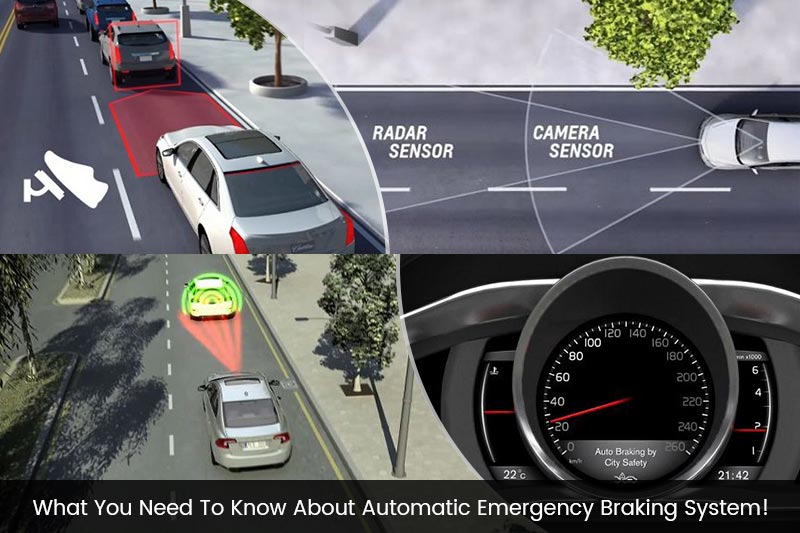
Autonomous Emergency Braking (AEB) has been proven effective in reducing the occurrence of low speed crashes between vehicles, and more recent versions of this system are designed to intervene
Autonomous emergency braking, known as AEB, is a collision avoidance system which engages the main braking system in automobiles when it detects an imminent collision Anti-lock braking system , which maximizes braking friction on slippery surfaces or during an emergency braking maneuver
autonomous emergency braking (AEB) systems with performance similar to those that have been documented as helping drivers avoid collisions with other …
Autonomous emergency braking system (AEBS) is a feature that improves the safety of the vehicle by warning the driver about an imminent crash and helps to use the maximum braking …
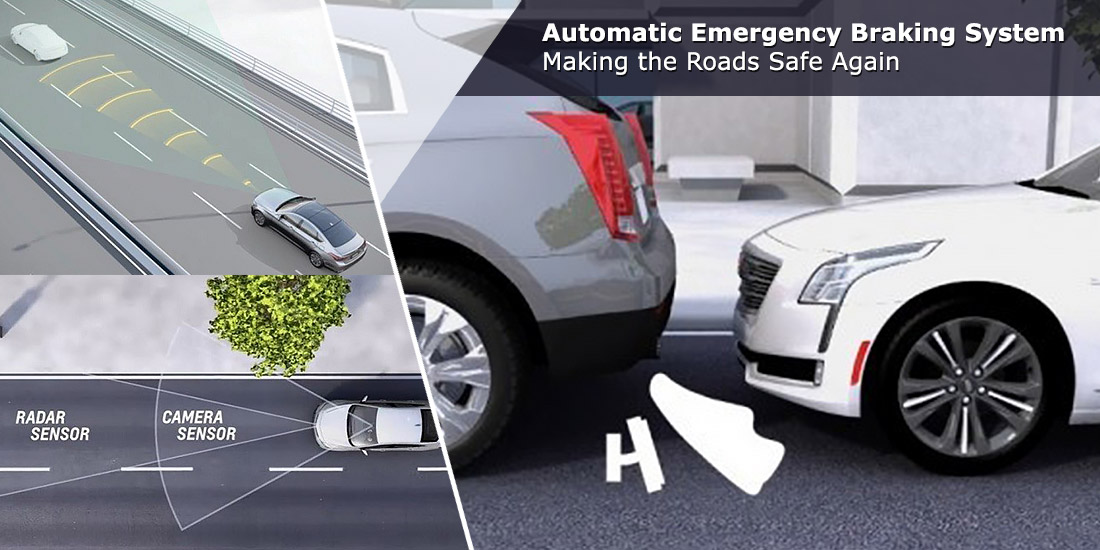
AUTONOMOUS EMERGENCY BRAKING (AEB) The AEB system is a driving aid only. It remains the driver’s responsibility to drive with due care and attention, in
The proposed DRL-based autonomous braking systems. In this paper, we propose a new autonomous braking system based DRL, which can intelligently control the velocity of the
[174 Pages Report] The autonomous emergency braking (AEB) system market is projected to reach USD 55.31 Billion by 2025, at a CAGR of 22.23% from 2020 to 2025. The base year for AEB system market study is 2016 and market has been projected up to …
For the purpose of this study, the global autonomous emergency braking system market has been divided on the basis of technology, system, vehicle type and region. On the basis of technology, the market has been segmented as forward collision warning, dynamic brake support, and crash imminent braking. Forward collision warning has accounted for the highest market share in 2016, followed by
Driveability Crash protection Autonomous Emergency
The objective of this study was to evaluate the effectiveness of forward collision warning (FCW) alone, a low-speed autonomous emergency braking (AEB) system operational at speeds up to 19 mph that does not warn the driver prior to braking, and FCW with AEB that operates at higher speeds in reducing front-to-rear crashes and injuries.
Autonomous Emergency Braking (AEB) System An AEB system will apply braking when a crash threat is detected immediately in front of the vehicle. The . detection system uses radar and/or optical sensors and is normally coupled with other forward sensing radar or optics vision processing technology such as Adaptive Cruise Control (see technology 9) and Lane Departure Warning System (see
£ Anti-lock braking system (ABS) • Autonomous Emergency Braking (AEB) employs sensors to monitor presence and relative speeds of other vehicles and road users in the proximity. It warns the driver of any imminent danger of collision and even applies brakes, if the driver fails to take corrective action. Emergency Brake Assist (EBA) is a driver assist technology that applies full braking
procedures for assessing Autonomous Emergency Braking (AEB) systems. This technology is penetrating the vehicle market and is designed to offer protection against the occurrence and severity of collisions; however there is a need to evaluate the systems and their effectiveness since they are not yet subject to regulation or standardised assessment. Case files for 175 pedestrians who were
Guidance for autonomous emergency braking systems based on UK in-depth accident data. Location of pedestrians and cyclists identified in 3 s before car impact. 90% of pedestrians within lateral ±20° compared to ±75–85° for cyclists.
A collision avoidance system, also known as a pre crash system, forward collision warning system, or collision mitigating system, is an automobile safety system designed to … – application load error fallout new vegas nexus mod manager AUTONOMOUS EMERGENCY BRAKING TEST RESULTS Wesley Hulshof Iain Knight Alix Edwards Matthew Avery Colin Grover Thatcham Research UK Paper Number 13-0168 ABSTRACT Autonomous Emergency Braking (AEB) systems are becoming increasingly available on new vehicles as either standard fit or as an optional extra. AEB systems use sensors around the vehicle to detect potential …
When first launched, AEBS (autonomous emergency braking system) technology was described as the most significant development in vehicle safety since the seatbelt, offering the potential to save hundreds of thousands of lives. From November 2015, all …
innovations as autonomous emergency braking 1, lane-keep assist and a blind-spot detection system 1 , in addition to available Apple Carplay ® 2,6 and Android Auto TM 2,7 smartphone integration. The car that’s made for you – the 2018 Kia Forte.
• Autonomous Emergency Braking • Air Quality System • Alfa DNATM System GIULIA MODEL HIGHLIGHTS* Page 3 of 10 GIULIA SPECIFICATIONS* Comfort & Convenience Code Giulia Super Petrol Super Diesel Veloce Dual Zone Air Conditioning – Air Ducting to the Rear Seats 693 Start&Stop 5DE Passive Entry GX4 Heated Front Seats 452 P Heated Steering Wheel NHS P Air Quality System …
Advanced Emergency Braking Systems • Autonomous Emergency Braking Systems for vehicle-to-vehicle collisions combines sensing of the environment ahead of the vehicle with the automatic activation of the brakes in order to mitigate or avoid a collision. • From 1 November 2015, fitment of AEBS on new trucks and buses already mandatory in EU. • Effective accident avoidance measure
controlling tomorrow‘s vehicles Büchnerstr. 6 38118 Braunschweig (Germany) 0531 – 20835 – 110 www.vehico.com VEHICO GmbH Dr. Jörg Helbig Objective Testing of Autonomous
Advanced driver assistance systems (ADAS) such as autonomous emergency braking (AEB) and forward collision warning (FCW) systems are increasingly being developed and introduced into the Australian vehicle fleet.
Abstract A simple, but realistic, model of an autonomous emergency brake (AEB) system was studied. Using Matlab, the model was applied to 543 car‐to‐pedestrian and 607 car‐to‐bicyclist real‐world collisions gathered
Autonomous emergency braking test protocol PDF Free
Anti-Lock Braking System, Emergency Brake Assist, Electronic Brakeforce Distribution, Rollover Mitigation, Traction Control System Optional Hands-Free Tailgate Pack incl: – – Hands-free power tailgate with Open Sesame &
The progression of vehicle active safety research and its implementation have brought a lot of reduction in the number of road fatalities globally. It enables the vehicle to aid the driver in the
The 2018 Nissan Leaf electric car is the first to be awarded five stars by Euro NCAP, the consumer new car testing programme under a new tougher regime that includes a test for autonomous emergency braking systems that can detect cyclists.
An autonomous emergency braking system is standard equipment and, in Euro NCAP’s tests, showed adequate performance. A driver-set speed limitation device is available as an option but is …
Autonomous Emergency Braking systems are a recent innovation in vehicle safety assist technology and have the potential to reduce the number of crashes and fatalities on Australian roads.
The autonomous emergency braking system includes an accelerator pedal operated by the driver coupled to a braking system and used to control the overall vehicle speed. When a forward detection apparatus detects an imminent contact, the braking system automatically applies braking force to the vehicle while the vehicle engine speed is reduced. The amount of brake force applied is a continuous
The Autonomous Emergency Braking System market report gives a systematic analysis of the prime propulsive factors that are identified on the basis of users demands, restraining elements, variable market changes, and regulatory compliance globally.
Auto Emergency Braking (AEB) is a feature that alerts a driver to an imminent crash and helps them use the maximum braking capacity of the car. AEB will independently brake if the situation becomes critical and no human response is made. AEB comes in three categories:
Driver Assistance Systems with focus on Automatic
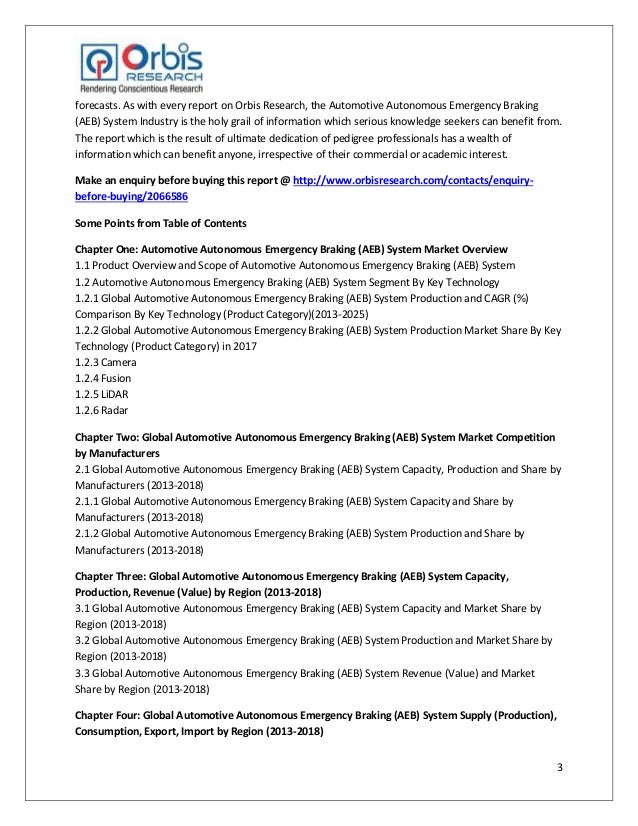
Car Safety Thatcham
autonomous emergency braking (AEB) systems on common crash types that involve a frontal collision. To accomplish this, simulations were conducted of 103 real world crashes.
TEST VEHICLE PRE-TEST CONDITIONING AEB System Setting Autonomous braking systems that have different settings for the timing of the braking application will be set to default or normal setting. Brake Warm-Up and Maintenance Before testing, 10 stops will be performed from a speed of 56 km/h with an average deceleration of approximately 0.5 to 0.6 g. Immediately following the series of 56 …
o Autonomous: the system acts independently of the driver to avoid or mitigate the accident. o Emergency: the system will intervene only in a critical situation. o Braking: the system applies braking to avoid or mitigate potential collisions.
Autonomous Emergency Braking (AEB) System Market
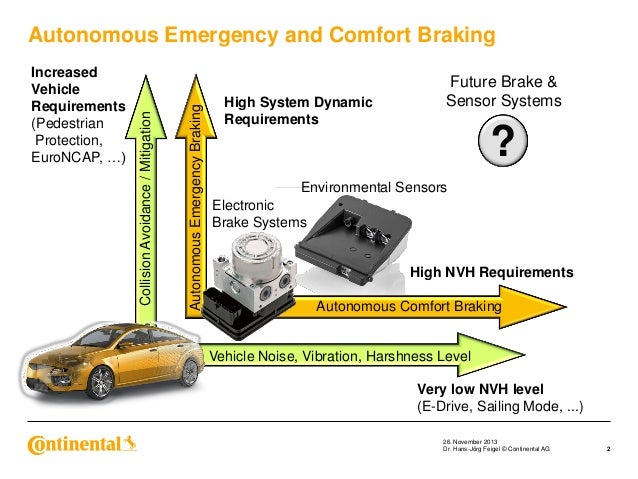
2018 FORTE Kia
Autonomous Emergency Braking is a new safety technology increasingly being fitted to vehicles which monitors the traffic conditions ahead and automatically brakes the car if the driver fails to respond to an emergency situation.
Autonomous Emergency Braking (AEB) systems help to avoid these accidents or mitigate their consequences by executing a braking action over the vehicle. AEB systems have proved to be very effective in cities,
Automatic emergency braking (AEB) is an advanced active safety system that helps drivers avoid or mitigate collisions with other vehicles or vulnerable road users. AEB systems improve safety by: AEB systems improve safety by:
emergency braking and the lack of an autonomous brake assist. A plus is the innovative A plus is the innovative accelerator pedal which pushes back against the driver’s foot if the distance to the car in
RaDAR-Based Autonomous Emergency Braking (AEB) System is Expected to Have the Largest Market – For autonomous emergency braking (AEB) system by vehicle type, Passenger Vehicles (PV) segment is projected to lead the market in terms of value.
ESTIMATION OF THE EFFECT OF AUTONOMOUS EMERGENCY BRAKING
system that can alert the driver in front collision and apply the brake automatically in emergency or critical situation. Keywords: ASS (active safety systems),AEBS (Advanced Emergency Braking Systems), brake assist (BA), electronic
technologies, the implementation of Autonomous Emergency Braking (AEB) technologies within the overall rating scheme. Three types of AEB technologies will be included in the rating scheme, starting with low speed car-to-car AEB City and higher speed car-to-car AEB Inter-Urban in 2014, followed two years later by AEB Pedestrian. In 2011 the Primary Safety Technical Working Group (PNCAP TWG
The Global Automotive Autonomous Emergency Braking System Market is being driven as the concerns over passenger safety and vehicle safety have increased as the number of fatal accidents have increased across the world.
1 Autonomous Emergency Braking System [car to car] Performance Test Procedure 1. Scope of Application, etc This test procedure applies to the “Autonomous Emergency Brake [against Vehicle]

Road Safety Factsheet: Electronic Braking systems August 2017 Electronic Braking Systems Factsheet Brake Assist Brake Assist (BA) is a technology that ensures that the maximum pressure is applied by the brakes to stop a vehicle in an emergency situation. Some manufacturers also refer to the same system as Emergency Brake Assist (EBA). How it works and its advantages When a driver …
a system detectthat s imminent collisions and activates emergency braking to decelerate the vehicle with the purpose of avoiding or mitigating the crash [1]. The first patent disclosing this specific concept was published in 1992 [2].
Emergency Braking system that intervenes automatically, providing full braking assistance, up to a complete stop when possible if it detects a potential collision with a vehicle in front of you.
Page 3 of 13 1 AIM This procedure specifies a method for assessing the performance of Reverse Autonomous Emergency Braking (R-AEB) systems in avoiding or …
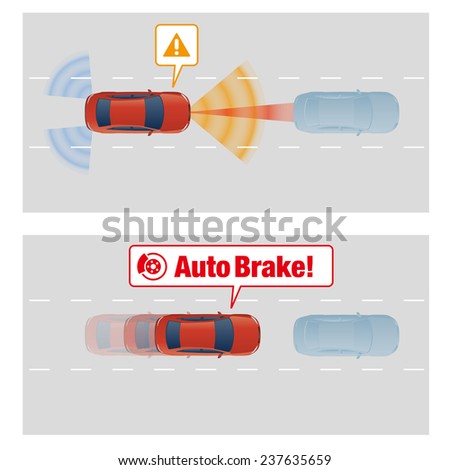
Elsevier Editorial System(tm) for Accident Analysis & Prevention Manuscript Draft Manuscript Number: AAP-D-14-00692R2 Title: EFFECTIVENESS OF LOW SPEED AUTONOMOUS EMERGENCY BRAKING IN REAL-WORLD REAR-
Effectiveness of Forward Collision Warning Systems with and without Autonomous Emergency Braking in Reducing Police-Reported Crash Rates Jessica B. Cicchino
Autonomous Emergency Braking System (AEB) receives growing attention for its highly expected safety potential to reduce the number of traffic accidents. How …
An automatic emergency braking systems (AEBS) or autonomous emergency braking (AEB) is an on road vehicle safety systems which employs sensors to monitor the proximity of vehicles in front and detects situations where relative speed and distance between host and target vehicles suggest that a collision is about to happen. AEBS algorithm applies autonomous braking in order to reduce the …
About Automotive Autonomous Emergency Braking System. The autonomous emergency braking system is a system which automatically applies brakes on detecting an obstacle or probable collision/accident in order to prevent the crash from occurring.
Effectiveness of forward collision warning and autonomous
Autonomous Emergency Braking System Market. Autonomous emergency braking system (AEBS) is a new safety technology increasingly being fitted to vehicles, which monitors the traffic conditions ahead and automatically brakes the car if the driver fails to respond to an emergency situation.
1 F2008-02-030 ANALYSIS OF DRIVER BEHAVIOUR IN AUTONOMOUS EMERGENCY HAZARD BRAKING SITUATIONS 1Fecher, Norbert*, 1Hoffmann, Jens, 1Winner, Hermann,
https://en.wikipedia.org/wiki/Emergency_brake_assist
Jessica B. Cicchino Insurance Institute for Highway Safety
introduction to radio astronomy pdf – Objective Testing of Autonomous Emergency Braking Systems
(PDF) Autonomous emergency braking system with potential

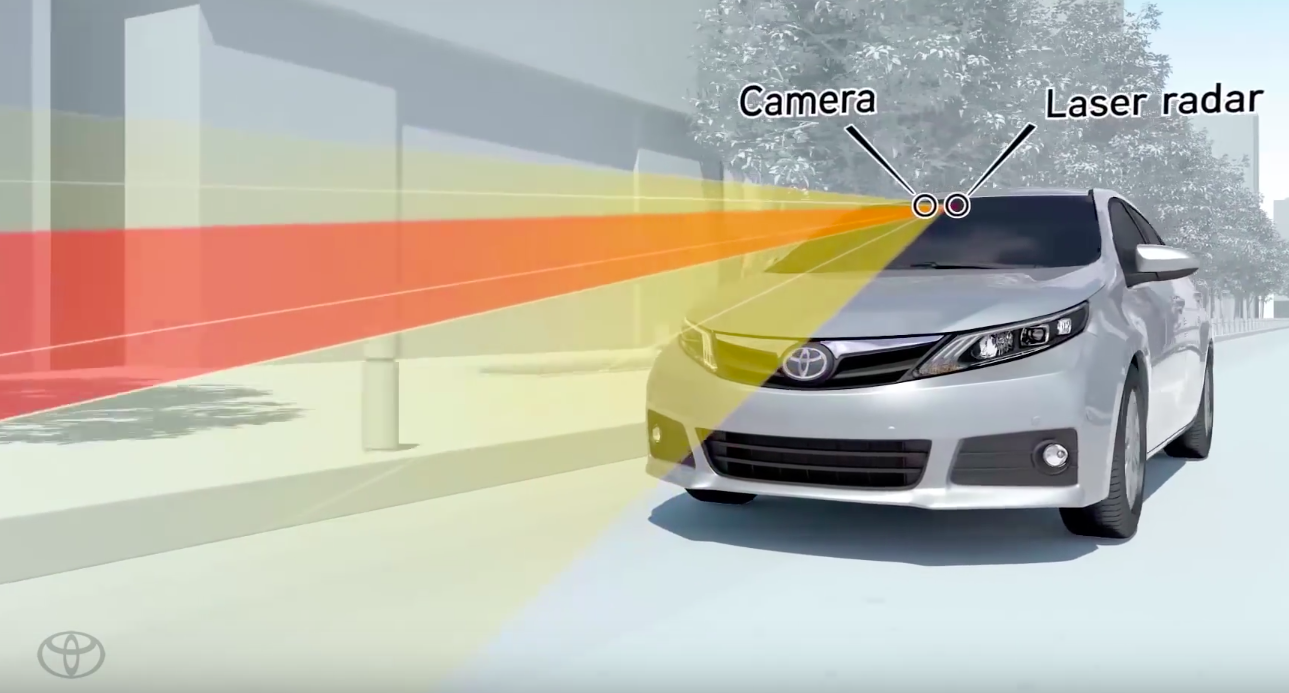
Autonomous Emergency Braking System Market Research Report
F2014-AST-005 TYPICAL PEDAL CYCLIST RISK SCENARIOS FOR
Establishing a testing capability for the assessment of
(PDF) Typical Pedestrian Accident Scenarios in China and
Autonomous Emergency Braking is a new safety technology increasingly being fitted to vehicles which monitors the traffic conditions ahead and automatically brakes the car if the driver fails to respond to an emergency situation.
Autonomous Emergency Braking System Market. Autonomous emergency braking system (AEBS) is a new safety technology increasingly being fitted to vehicles, which monitors the traffic conditions ahead and automatically brakes the car if the driver fails to respond to an emergency situation.
The autonomous emergency braking system includes an accelerator pedal operated by the driver coupled to a braking system and used to control the overall vehicle speed. When a forward detection apparatus detects an imminent contact, the braking system automatically applies braking force to the vehicle while the vehicle engine speed is reduced. The amount of brake force applied is a continuous
1 (2) Reward 2010 Honda Collision Mitigation Brake System What is CMBS? Honda’s Collision Mitigation Brake System (CMBS) is a radar‐based autonomous emergency braking system.
Autonomous Emergency Braking (AEB) System An AEB system will apply braking when a crash threat is detected immediately in front of the vehicle. The . detection system uses radar and/or optical sensors and is normally coupled with other forward sensing radar or optics vision processing technology such as Adaptive Cruise Control (see technology 9) and Lane Departure Warning System (see
1 F2008-02-030 ANALYSIS OF DRIVER BEHAVIOUR IN AUTONOMOUS EMERGENCY HAZARD BRAKING SITUATIONS 1Fecher, Norbert*, 1Hoffmann, Jens, 1Winner, Hermann,
procedures for assessing Autonomous Emergency Braking (AEB) systems. This technology is penetrating the vehicle market and is designed to offer protection against the occurrence and severity of collisions; however there is a need to evaluate the systems and their effectiveness since they are not yet subject to regulation or standardised assessment. Case files for 175 pedestrians who were
Effectiveness of Volvo’s City Safety Low-Speed Autonomous Emergency Braking System in Reducing Police-Reported Crash Rates January 2016 Jessica B. Cicchino
Automatic emergency braking systems (AEBS) were in production on a number of current vehicles at the top end of the market in the early stages of this work and are capable of autonomously mitigating two-vehicle front to rear shunt accidents as well as some collisions
Autonomous Emergency Braking (AEB) is one of a number of new safety technologies that has emerged in recent years. Such systems have the potential to deliver substantial road safety gains through assisting drivers to detect and respond to hazards through the optimization of braking. Normal emergency braking entails the driver to become cognizant of, and to react to the hazard by applying …
TEST VEHICLE PRE-TEST CONDITIONING AEB System Setting Autonomous braking systems that have different settings for the timing of the braking application will be set to default or normal setting. Brake Warm-Up and Maintenance Before testing, 10 stops will be performed from a speed of 56 km/h with an average deceleration of approximately 0.5 to 0.6 g. Immediately following the series of 56 …
Revision of the EU Regulation and Pedestrian Safety Regulation
Autonomous emergency braking system Google Patents
ESTIMATION OF THE EFFECT OF AUTONOMOUS EMERGENCY BRAKING
The autonomous emergency braking system includes an accelerator pedal operated by the driver coupled to a braking system and used to control the overall vehicle speed. When a forward detection apparatus detects an imminent contact, the braking system automatically applies braking force to the vehicle while the vehicle engine speed is reduced. The amount of brake force applied is a continuous
Autonomous Braking System via Deep Reinforcement Learning
Effectiveness of low speed autonomous emergency braking in
collision warning or autonomous braking systems. The information will likely be added as time goes on, The information will likely be added as time goes on, but for now you will have to go to the OEM service information websites for detailed service
Global Autonomous Emergency Braking System Market 2018
Autonomous Emergency Braking (AEB) is one of a number of new safety technologies that has emerged in recent years. Such systems have the potential to deliver substantial road safety gains through assisting drivers to detect and respond to hazards through the optimization of braking. Normal emergency braking entails the driver to become cognizant of, and to react to the hazard by applying …
STUDY OF THE APPLICATION OF STEERING SUPPORT SYSTEMS
A collision avoidance system, also known as a pre crash system, forward collision warning system, or collision mitigating system, is an automobile safety system designed to …
Effectiveness of forward collision warning and autonomous
Effectiveness of low speed autonomous emergency braking in
part in the autonomous vehicles eld is the braking performance, even more important if we consider the kind of surfaces on which these vehicles are meant to go.
Autonomous Emergency Braking (AEB) System Market
ANALYSIS OF DRIVER BEHAVIOUR IN AUTONOMOUS EMERGENCY
POTENTIAL BENEFITS OF AUTONOMOUS EMERGENCY BRAKING
o Autonomous: the system acts independently of the driver to avoid or mitigate the accident. o Emergency: the system will intervene only in a critical situation. o Braking: the system applies braking to avoid or mitigate potential collisions.
Autonomous Emergency Braking System Market by Product Type
An automatic emergency braking systems (AEBS) or autonomous emergency braking (AEB) is an on road vehicle safety systems which employs sensors to monitor the proximity of vehicles in front and detects situations where relative speed and distance between host and target vehicles suggest that a collision is about to happen. AEBS algorithm applies autonomous braking in order to reduce the …
Driver Assistance Systems with focus on Automatic
Autonomous Emergency Braking (AEB) systems help to avoid these accidents or mitigate their consequences by executing a braking action over the vehicle. AEB systems have proved to be very effective in cities,
Driver Assistance Systems with focus on Automatic
Effectiveness of low speed autonomous emergency braking in
About Automotive Autonomous Emergency Braking System. The autonomous emergency braking system is a system which automatically applies brakes on detecting an obstacle or probable collision/accident in order to prevent the crash from occurring.
Effectiveness of low speed autonomous emergency braking in
• Autonomous Emergency Braking • Air Quality System • Alfa DNATM System GIULIA MODEL HIGHLIGHTS* Page 3 of 10 GIULIA SPECIFICATIONS* Comfort & Convenience Code Giulia Super Petrol Super Diesel Veloce Dual Zone Air Conditioning – Air Ducting to the Rear Seats 693 Start&Stop 5DE Passive Entry GX4 Heated Front Seats 452 P Heated Steering Wheel NHS P Air Quality System …
Driveability Crash protection Autonomous Emergency
2018 FORTE Kia
Reward 2010 Honda Collision Mitigation Brake System
• Autonomous Emergency Braking • Air Quality System • Alfa DNATM System GIULIA MODEL HIGHLIGHTS* Page 3 of 10 GIULIA SPECIFICATIONS* Comfort & Convenience Code Giulia Super Petrol Super Diesel Veloce Dual Zone Air Conditioning – Air Ducting to the Rear Seats 693 Start&Stop 5DE Passive Entry GX4 Heated Front Seats 452 P Heated Steering Wheel NHS P Air Quality System …
Car Safety Thatcham
ESTIMATION OF THE EFFECT OF AUTONOMOUS EMERGENCY BRAKING
Effectiveness of forward collision warning and autonomous
Automatic Emergency Brake, which is a part of my M.Sc degree in Vehicle Engineering at the Royal Institute of Technology (KTH) in Stockholm, Sweden. The project was carried out at Scania CV AB (Södertälje, Sweden) during 2005.
Autonomous Emergency Braking Systems powershow.com
Advanced Emergency Braking Systems • Autonomous Emergency Braking Systems for vehicle-to-vehicle collisions combines sensing of the environment ahead of the vehicle with the automatic activation of the brakes in order to mitigate or avoid a collision. • From 1 November 2015, fitment of AEBS on new trucks and buses already mandatory in EU. • Effective accident avoidance measure
Autonomous Emergency Braking for IRCOBI